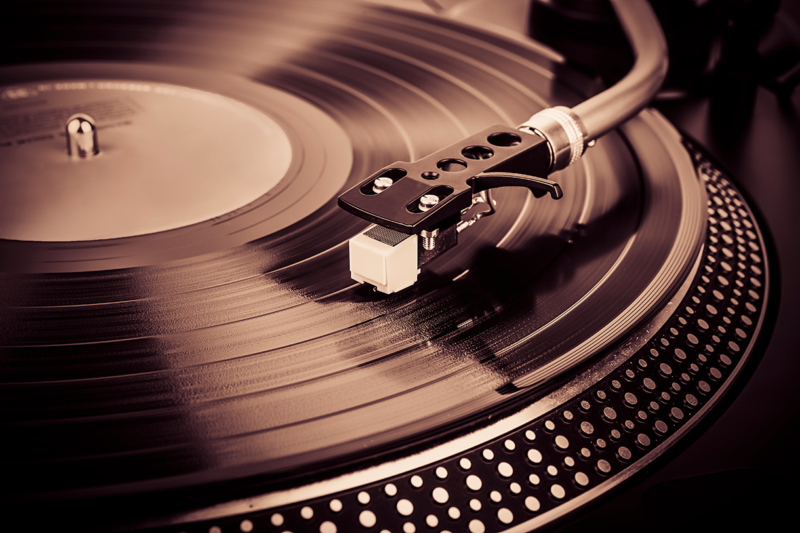The Renaissance of Vinyl Records: Why Analog Music is Making a Comeback
October 16, 2024

In an age dominated by digital streaming and instant access to millions of songs, vinyl records have experienced a remarkable resurgence. Music enthusiasts, collectors, and even casual listeners are turning to vinyl for its unique sound quality and tangible experience. This article explores the factors contributing to the vinyl revival, examining the cultural, technological, and emotional reasons why analog music is resonating with a new generation.
The History of Vinyl Records
Early Beginnings
- Phonograph Invented (1877): Thomas Edison introduced the first device capable of recording and reproducing sound.
- Gramophone Records: Emile Berliner developed flat discs, leading to the standard 78 RPM records.
The Golden Age
- LP Records (1948): Columbia Records introduced the 33 1/3 RPM long-playing record, allowing for longer playtime.
- 45 RPM Singles: RCA Victor’s 7-inch records became popular for single songs.
Decline with Digitalization
- Compact Discs (1982): CDs offered portability and durability, leading to a decline in vinyl sales.
- Digital Downloads and Streaming: MP3s and platforms like iTunes and Spotify further marginalized physical formats.
The Vinyl Revival
Sales Resurgence
- Growth Statistics: Vinyl sales have been increasing steadily since the mid-2000s.
- 2020 Milestone: Vinyl outsold CDs for the first time since the 1980s in certain markets.
Demographics
- Younger Audience: Millennials and Gen Z are significant contributors to vinyl’s popularity.
- Collectors and Audiophiles: Long-time enthusiasts continue to drive demand.
Factors Driving the Comeback
Sound Quality and Listening Experience
- Warmth of Analog Sound: Vinyl is praised for its rich, warm tones that some argue are superior to digital audio.
- Active Listening: The physical act of playing a record encourages listeners to engage more deeply with the music.
Tangibility and Aesthetics
- Album Artwork: Larger canvas for cover art enhances visual appreciation.
- Collectibility: Owning a physical item adds value beyond the music itself.
Nostalgia and Authenticity
- Retro Appeal: Vinyl taps into a longing for the past and simpler times.
- Authentic Experience: The imperfections of vinyl playback add character and authenticity.
Cultural and Social Factors
- Independent Record Stores: Community hubs that promote music culture.
- Record Store Day: Annual event celebrating vinyl with exclusive releases and events.
The Role of Artists and Labels
Special Releases
- Limited Editions: Colored vinyl, picture discs, and special packaging attract collectors.
- Bonus Content: Inclusion of liner notes, posters, and download codes.
Support from Musicians
- Artistic Expression: Artists appreciate the creative possibilities of vinyl formats.
- Revenue Stream: Physical sales provide better margins compared to streaming royalties.
Technological Advances
Modern Pressing Techniques
- Improved Quality Control: Advances reduce defects like warping and surface noise.
- High-Fidelity Reissues: Remastered albums offer enhanced audio experiences.
Turntable Innovations
- Affordable Options: Entry-level turntables make vinyl accessible to new listeners.
- High-End Equipment: Audiophiles invest in premium setups for optimal sound.
Challenges and Criticisms
Production Bottlenecks
- Limited Pressing Plants: Increased demand leads to longer wait times for new releases.
- Environmental Concerns: Vinyl production involves plastics and chemicals that impact the environment.
Cost and Accessibility
- Higher Prices: Vinyl records and equipment can be expensive compared to digital alternatives.
- Availability: Not all music is released on vinyl, limiting choices for listeners.
Sound Quality Debate
- Analog vs. Digital: Some argue that high-quality digital formats offer superior fidelity.
- Mastering Practices: Poorly mastered vinyl can negate sound quality benefits.
The Future of Vinyl
Sustainable Practices
- Eco-Friendly Materials: Research into biodegradable and recycled materials for records.
- Green Initiatives: Labels and manufacturers adopting sustainable practices.
Integration with Digital
- Digital Download Codes: Combining physical and digital ownership.
- Hybrid Turntables: Devices that bridge analog playback with digital recording and streaming capabilities.
Community and Cultural Impact
- Continued Growth of Record Stores: Serving as cultural hubs and supporting local economies.
- Educational Opportunities: Workshops and events that teach about music history and audio technology.
Tips for New Vinyl Enthusiasts
Starting a Collection
- Begin with Favorites: Purchase albums you love to ensure enjoyment.
- Explore Used Records: Thrift stores and flea markets can offer affordable options.
Choosing Equipment
- Budget Considerations: Start with a reliable entry-level turntable.
- Upgradability: Look for equipment that allows for component upgrades.
Care and Maintenance
- Proper Storage: Keep records upright and in a cool, dry place.
- Cleaning Records: Regularly clean to maintain sound quality and preserve longevity.
Conclusion
The renaissance of vinyl records represents more than just a nostalgic trend; it’s a multifaceted phenomenon driven by a desire for authentic experiences, superior sound quality, and a tangible connection to music. As technology continues to evolve, vinyl stands as a testament to the enduring appeal of analog media. Whether you’re an audiophile, a collector, or a curious newcomer, vinyl offers a unique journey into the heart of music.







